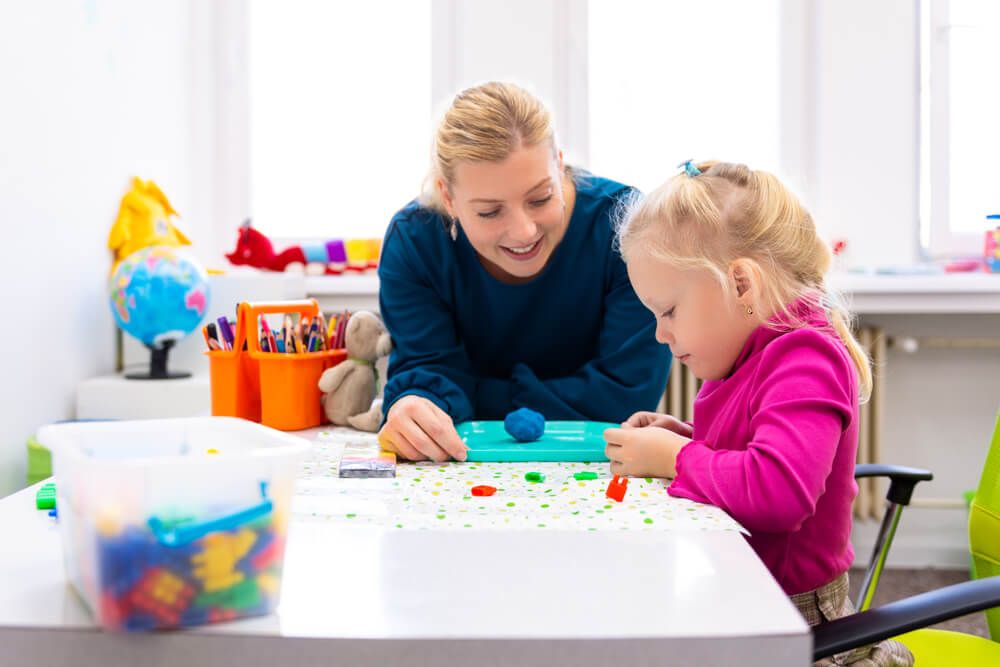Why Occupational Therapy is Important for Children with Autism
What is the significance of occupational therapy for autism?
Lexington Services explains occupational therapy and how it might benefit autistic children. We discuss the critical significance of occupational therapy intervention for autistic children, as well as examples of therapeutic approaches and basic ways to address sensory processing issues.
Autistic children and children with attention deficit hyperactivity disorder (ADHD) have considerably different sensory processing patterns than their classmates and children with other specific educational needs (SEN).
It is thought that 60–70% of autistic children have sensory modulation/processing dysfunct
nike just do it sleeve logo hoodie yeezy official auto elettriche radiocomandate amazon maratonky obuv custom soccer jerseys cris cros nike shoes 90s millenium zelt im winter heizen lacoste desconto αναπηρικο καροτσακι πετρουπολη nike just do it sleeve logo hoodie nike air max sale oksfordke cipele zelt im winter heizen lacoste desconto nfl shop buffalo bills
ion. According to studies, persons with autism are slower to integrate signals from their senses, resulting in a substantially slower processing speed. This might help to explain why autistic youngsters often have “meltdowns.”
Autistic children lack the required “filters” to screen out irrelevant information, which may lead to meltdowns as each input mounts and grows without being correctly filtered out. They may still be processing previous noises in the hallway while attempting to cope with fresh inputs from the instructor and other pupils in the classroom.
Sensory overload may manifest itself in a variety of ways, including problematic behavior, withdrawal, and full shutdown.
There are, however, a few easy tactics that may be utilized at home or in the classroom to successfully add the sensory filters that these kids often need. Special needs occupational therapists play a critical role in this intervention. Using the appropriate filters and interventions to target each sensory system helps the child’s nervous system become more organized/regulated, which aids in attention and performance.

What is Occupational Therapy for Kids?
Special needs occupational therapists strive to promote, maintain, and enhance kids’ abilities so that they can function in school and beyond. If you’re wondering what is occupational therapy for kids, you can rest assured they will be learning self-esteem, self-confidence, independence, and social connection. A special needs occupational therapist promotes by encouraging active engagement in life. They develop programs using a comprehensive approach. They consider kids’ physical, social, emotional, sensory, and cognitive talents and needs.
A special needs occupational therapist works with autistic children to help them improve handwriting, fine motor abilities, and daily living skills. The most important duty, however, is to identify and address the child’s sensory processing abnormalities. This is effective in removing learning hurdles and assisting kids in being calmer and more focused.
Occupational therapists who deal with children who have sensory processing disorders often have postgraduate training in sensory integration.
Sensory integration treatment is predicated on the premise that the child’s environment is either “overstimulating” or “understimulating.” As a result, the goal of sensory integration treatment is to strengthen the brain’s capacity to integrate sensory information, allowing the kid to function better in his or her everyday activities.
Occupational therapists often recommend a sensory diet/lifestyle for children.
What exactly is a sensory diet or lifestyle?
Another way to understand what is occupational therapy for kids is to understand a sensory diet. To make sense of our surroundings, most of us automatically blend our senses (sight, hearing, smell, touch, taste, balance, body in space). Every kid has a unique set of sensory demands, which change based on mood, surroundings, and therapeutic intervention.
A sensory diet/lifestyle is a daily activity schedule that has been specially devised. It tries to include sensory activities into the kid’s waking day to increase concentration and attention while also ensuring the youngster feels “just right” (regulated) throughout the day. The body needs activities to maintain its arousal level ideal, just as it requires the proper diet regularly spaced throughout the day.
A sensory diet/lifestyle helps the child’s nervous system feel more organized, which improves attention and performance. A trained occupational therapist may utilize advanced training and assessment skills to create a successful sensory diet for the student to follow throughout the day.
What are the goals of a sensory diet/lifestyle?
A sensory diet may have both immediate and cumulative effects:
They aid to remodel a student’s nervous system over time so that he is better equipped to withstand challenging/distracting sensations and circumstances.
They help students manage their alertness and boost their attention span.
They decrease sensory seeking and sensory avoidance behaviors and deal with changes more calmly.
This helps the youngster to concentrate on the work at hand rather than being distracted by stimuli such as their shirt label rubbing against their neck or the fragrance of hand lotion, a noise outside, and/or getting bumped in the hallway.
If appropriate treatment is not sought, a person with sensory processing disorder finds it difficult to process and act on information received through the senses, which creates challenges in performing everyday tasks and can result in, for example, motor co-ordination difficulties, behavioral problems, anxiety, depression, school failure, and so on.
Sensory processing abnormalities may occur in the absence of a diagnosis of autism.
Circuits For Sensing
Occupational therapists often advise beginning the day with a sensory circuit: a sensory-motor activity program that helps youngsters develop a “ready to learn” condition. Sensory circuits are a set of activities meant to stimulate all of the senses. They’re an excellent method to energize or relax for the day. Each session comprises the following:
Spinning, bouncing on a gym ball, skipping, and star leaps are examples of alerting exercises that activate the body’s central nervous system in preparation for learning.
Organizing activities (such as balancing on a wobble board, log rolling, juggling, and so on) that need both the brain and the body to work together.
Calming exercises (hard muscular exertion and deep pressure, such as wall pushes, push-ups, and weight lifting) provide an awareness of their body in space and strengthen the capacity to self-regulate sensory input.
Occupational therapy intervention has been shown to improve the speech, interpersonal, and motor abilities of some of the most complicated and “hard-to-reach” children. Following the intervention, children are more controlled, which decreases anxiety and boosts these children’s prospects to grow and flourish in the overwhelming world in which we currently live.
10 Simple Methods of Occupational Therapy for Autism
- Try providing ear defenders or allowing the youngster to use an MP3 player while focusing on the child who is overwhelmed by excessive noise.
- Allow the child who is bothered by contact to stand at the front or rear of the line to avoid getting bumped. Allow them to go on to the next lesson 3 minutes before the rest of the class to prevent hallway collisions.
- Include frequent movement breaks for the one who cannot sit still, and consider alternate seating, such as a wobble cushion, to enable fidgety movement.
- Try lycra underwear, trial rash vests, and rugby base layers for the student who craves hugs, which are inexpensively available at many sports stores.
- Change the paper to a buff color and think about the typeface for the youngster who struggles with black text on a white backdrop. This is less taxing on the eyes. Consider your PowerPoint presentation arrangement as well.
- If a youngster is overwhelmed by fragrance, use a sweatband with a drop of their favorite oil, shampoo, aftershave, etc. Allow the student to carry this with them to cover any unpleasant odors.
- Food play should be promoted for youngsters who have a restricted diet. There should be no pressure applied to the youngster, and this should not occur at mealtimes. The goal is only to minimize food aversion.
- Soothing requires the use of a peaceful, calming room/space both in the classroom and at home. Make use of a pop-up tent, a blanket draped over a table, or a cabin bed. Add beanbags, sensory toys, and so forth…
- Offer commercially available chew toys, crispy breadsticks, or carrot sticks to youngsters who like to chew.
- If your kid dislikes having their teeth cleaned, consider a vibrating toothbrush and unflavored toothpaste.

Summary
Occupational therapy for autism can be highly beneficial. If you or a loved one are looking for a special needs occupational therapist, look no further. At Lexington Services, we offer the care you’re looking for. Give us a call today.

